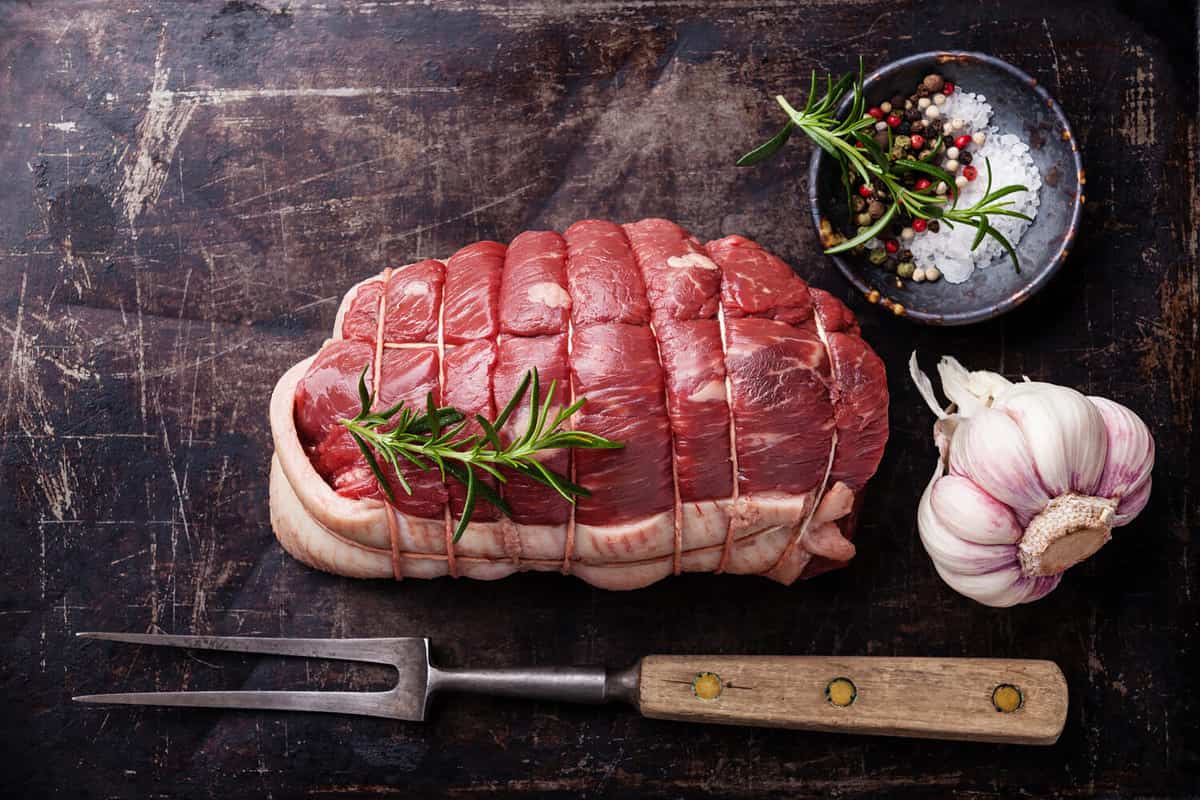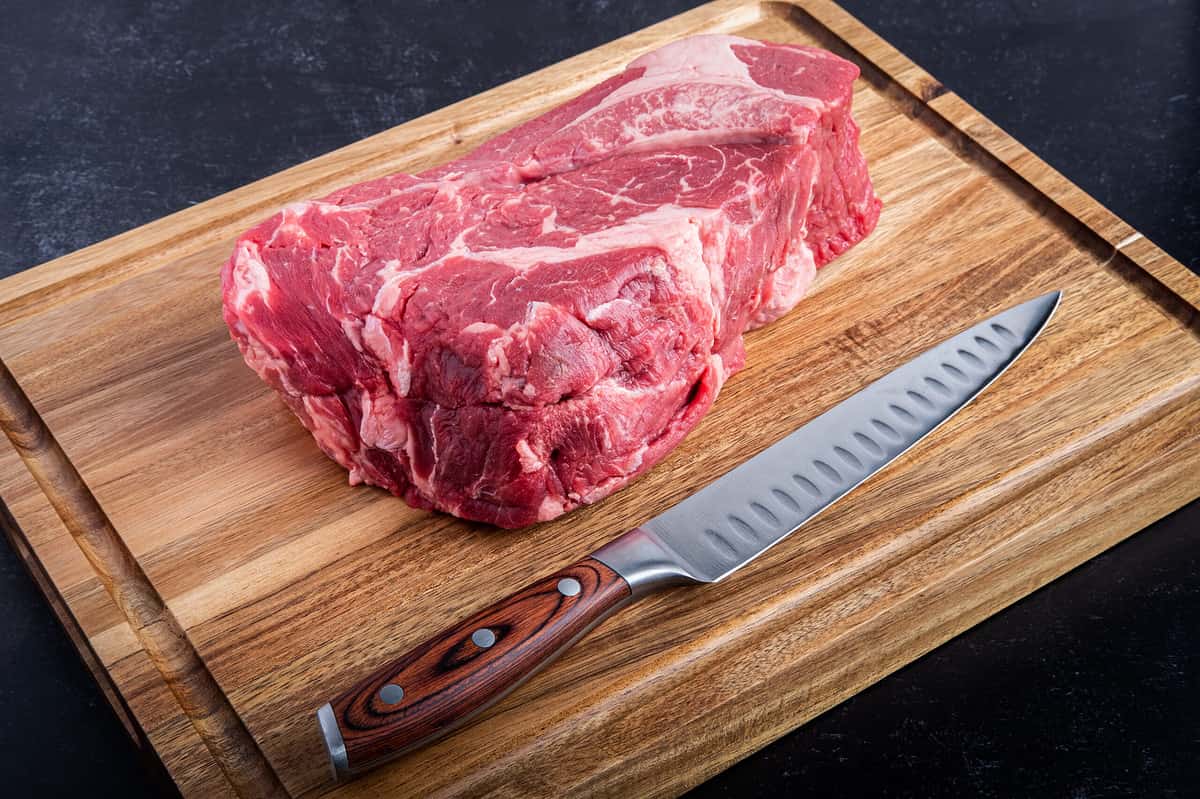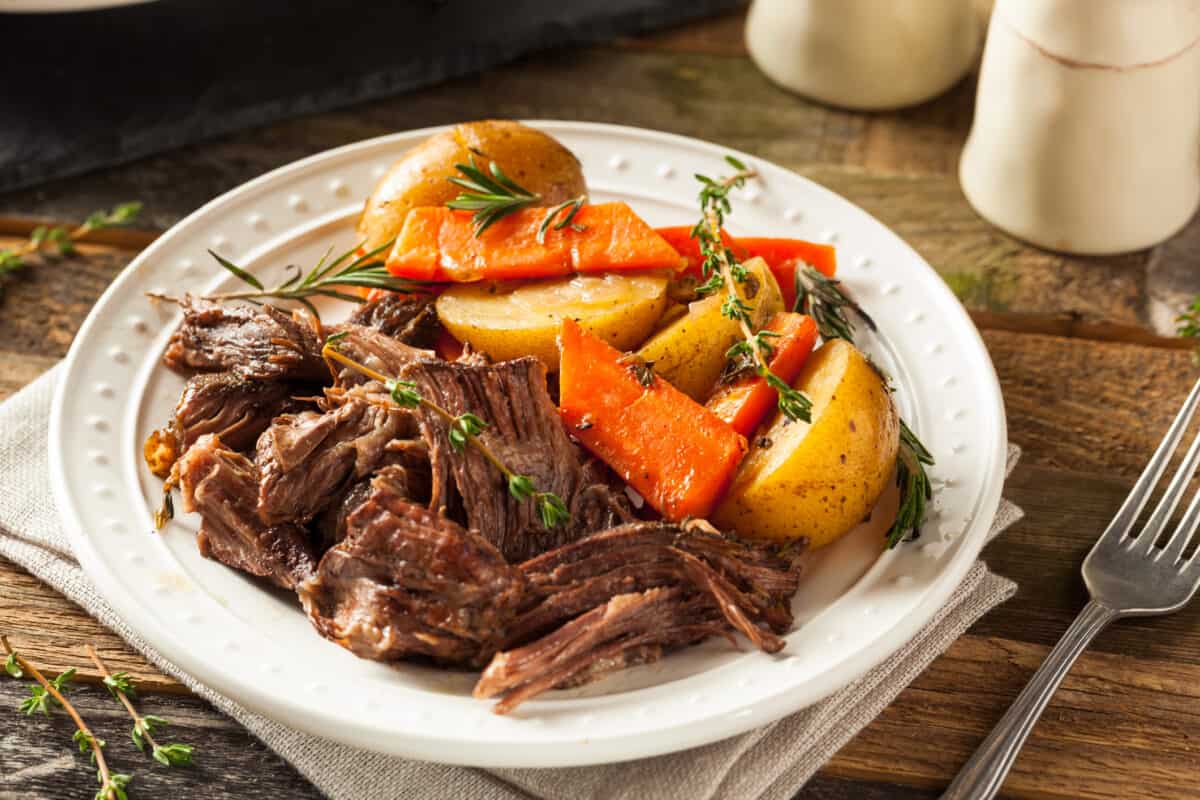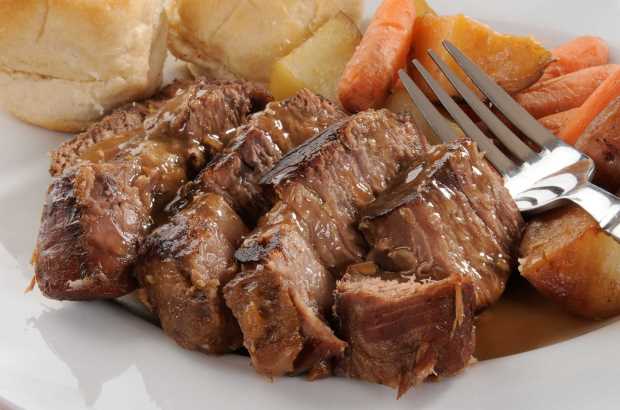You’ve decided you want roast beef for dinner, but when you see all the options at the meat counter, it’s hard to know what to buy. Rump roast and chuck roast are two of the most common types of beef roasts. Both are lean cuts of meat that require slow, moist heat to become tender. But what’s the difference between the two?
When deciding between rump roast vs. chuck roast, there are four main differences to consider: fat marbling, cost, cooking technique, and serving appearance. For example, a chuck roast is the wrong cut to purchase if you envision elegantly cut slices of meat arranged on a beautiful platter.
- The must-have convenient reference guide for every home cook!
- Includes more than 8,000 substitutions for ingredients, cookware, and techniques.
- Save time and money on by avoiding trips to grab that "missing" ingredient you don't really need.
Either type of roast will yield tender, delicious results with the correct cooking method. Let’s learn about each cut and what makes cooks choose one over the other.

©Natalia Lisovskaya/Shutterstock.com
What is rump roast?
As the name indicates, a rump roast is taken from a cow’s hindquarters. It is cut from an area near the loin. Rump roasts may also be called beef round roast, top round roast, or bottom round roast. Eye of round is a smaller type of roast cut from the same general area of the animal.
The United States Department of Agriculture (USDA) ranks rump roast in the “extra lean” category. This means it is much lower in fat than other cuts of beef roast, such as brisket or prime rib. The lack of fat marbling means rump roast meat will have less innate flavor and tenderness, but that can be overcome with proper cooking techniques.
Because it is a solid chunk of meat, rump roast is a good choice if you plan to serve slices of roast beef. It’s excellent cooked and thinly sliced for roast beef sandwiches.

©Bruce Peter/Shutterstock.com
What is chuck roast?
Chuck roast is taken from the muscular front shoulder of the cow. Because it is an area that gets a lot of exercise, the meat is lean — almost as lean as rump roast. Chuck roast may also be called chuck roll, or used as a flat-iron steak or turned into ground beef. Chuck roast can be found boneless or bone-in.
The USDA ranks chuck roast in the “lean” category, so you may see some fat marbling in the lean meat. This is especially true if you buy a cut called “chuck eye.” Chuck roast may be less tender than rump roast, but it is flavorful and juicy when slow-cooked.
Chuck roast has a flat, chunky appearance, so it doesn’t slice as neatly as a rump roast. However, it’s great cooked until fork tender, then broken apart into chunks or shredded. Chuck roast is the ideal meat for a classic crock pot roast beef dinner with potatoes and carrots.
Differences Between Rump Roast and Chuck Roast
| Rump Roast | Chuck Roast |
|---|---|
| Very little fat marbling/very lean | Little fat marbling/lean |
| Affordable, but costs slightly more than chuck | One of the most inexpensive cuts of roast beef |
| Can be slow-cooked, smoked, or thinly sliced for pho or sandwiches | Usually slow-cooked, classic pot roast style |
| Solid chunk of meat, good for slicing | Rolled or flat appearance, best served chunked or shredded |
How to Cook Rump Roast
Slow braising in flavorful liquid is a time-honored method for cooking rump roasts. This can be achieved in the oven with a traditional pot roast recipe or in a slow cooker. You can also braise a rump roast on the stovetop, but it requires a bit more attention than the other slow-cooking methods.
Rump roast may also be grilled or cooked quickly over high heat until the internal temperature is 145 degrees. Rump roast can also be smoked and sliced or pulled apart for barbecue sandwiches. Thinly sliced raw rump roast is an excellent choice for quick-cooking beef in pho or ramen.

©iStock.com/bhofack2
How to Cook Chuck Roast
The best way to cook chuck roast is slowly, in a Dutch oven or crock pot. This allows the tough connective tissue to dissolve and creates that fork-tender, fall-apart texture that’s so enjoyable. Use the braising liquid to make gravy with a rich, beefy flavor. For a more flavorful broth, choose a bone-in chuck roast. Slow-simmered bones not only add flavor, they also release valuable minerals and collagen into the cooking liquid.
- The must-have convenient reference guide for every home cook!
- Includes more than 8,000 substitutions for ingredients, cookware, and techniques.
- Save time and money on by avoiding trips to grab that "missing" ingredient you don't really need.
You can use chuck roast in recipes that call for quicker cooking methods. However, expect the meat to be chewy and tough. Cutting the meat across the grain can help make quick-cooked chuck roast easier to chew.
How to Choose a Good Rump Roast or Chuck Roast
When shopping for rump roast or chuck roast, look for bright red lean meat and choose a cut with some visible fat marbling. The fat at the edges of the roast won’t contribute much to tenderizing the beef, so try to find a cut that’s well-trimmed. Although both rump roast and chuck roast are economical, you don’t want to pay for fat that will just be thrown away.
Up Next
Great Beef Recipes Using a Crock Pot
Chuck Steak vs. Chuck Roast: 3 Key Differences & How to Cook Each
Crock Pot Cranberry Beef Roast Recipe
The image featured at the top of this post is ©MSPhotographic/Shutterstock.com.

